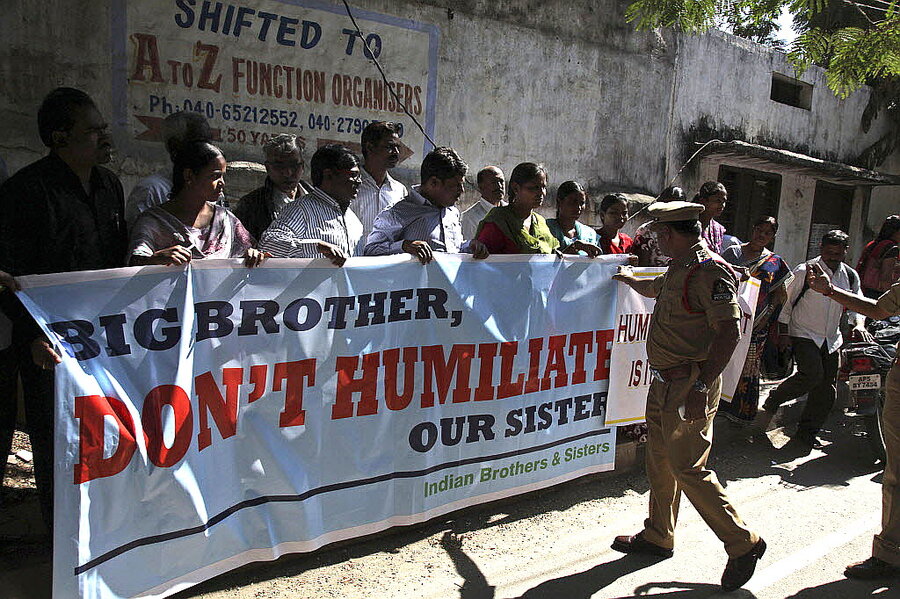Did US mistreat Indian diplomat? Her country is furious.
Loading...
| Washington
Recent cases of gang rapes of women in India, the impunity that the perpetrators of those crimes can often count on, and the low status of women in India in general have all commanded widespread attention in the United States – much to the chagrin of many Indian officials and media pundits.
But now the case of a female Indian diplomat arrested in New York City on visa fraud charges has allowed a furious Indian government and indignant domestic media an opening to turn the tables on the US – although in the process creating a diplomatic row that on Tuesday continued to escalate.
At issue is the arrest last week of the deputy consul-general of India’s New York consulate. Devyani Khobragade is accused of making false statements on the visa application of an Indian national she brought to the US to work as household help – and of paying the employee less than the US minimum wage.
The diplomat, arrested and handcuffed as she dropped her daughter off at school, was later released on $250,000 bond – but not before she was strip-searched and held with hardened criminals, according to her lawyer.
India’s national security adviser, Shivshankar Menon, blasted the diplomat’s treatment as “despicable and barbaric” – words that seemed to echo the terms that many in the US used to describe the official treatment afforded India’s gang-rape victims. Not to be outdone, India’s external affairs minister, Salman Khurshid, described Ms. Khobragade’s treatment as “a form of indignity (that) is for us completely unacceptable.”
The Indian government presented a formal complaint to the US ambassador in New Delhi.
The US initially downplayed the incident, with State Department officials insisting that standard procedures were followed in the course of the arrest, and countering India’s claim that Khobragade should have been shielded by diplomatic immunity with the argument that such immunity extends only to official duties.
But as the row showed no signs of abating Tuesday – Indian authorities were demanding that US consular officials in India relinquish their identity cards, and some high-level Indian officials, including the leaders of India’s two major political parties, canceled scheduled meetings with a visiting US congressional delegation – the State Department shifted its tone.
“We understand that this is a sensitive issue for many in India. Accordingly, we are looking into the intake procedures surrounding this arrest to ensure that all appropriate procedures were followed and every opportunity for courtesy was extended,” said State Department spokeswoman Marie Harf in a statement.
Calling the arrest an “isolated episode” that does not reflect “the close and mutually respectful ties” that the US and India share, she said the two countries would “continue to work this issue … in the spirit of partnership and cooperation that marks our broad bilateral relationship.”
Rhetoric – not to mention actions – in India have not yet shifted to repair mode, however. On Tuesday the Indian police used tow trucks and backhoes to remove the security barriers protecting the US Embassy compound in New Delhi. Indian police said the removal had to do with traffic-flow improvement, but Indian media reported anonymous government sources citing the barrier removal as part of a list of retaliatory measures.
In the same vein, some officials said the government would investigate the pay and working conditions of Indians working for US diplomats.
But the heated reporting and official indignation also seemed to reveal something about the status of women in India. TV journalists made a beeline to Khobragade’s father to get on camera his view of his daughter’s treatment.
And Narendra Modi, leader of the opposition Bharativa Janata Party who would become India’s next prime minister should the opposition win national elections next year, sounded a bit old school when he proudly tweeted out having stood up the visiting US congressional delegation.
“Refused to meet the visiting USA delegation,” he wrote, “in solidarity with our nation, protesting ill-treatment meted (out) to our lady diplomat in USA.”








